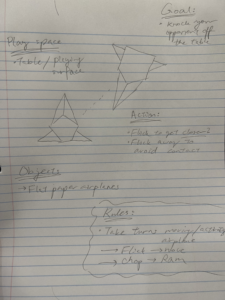Games have always intrigued me, not merely as a source of entertainment, but as complex systems with underlying mechanics that provide a rich ground for exploration and learning. Recently, I delved into the first chapter of “Games, Design and Play” and undertook the exercises proposed at the end of the chapter. Here’s a reflection on my discoveries, using the card game ‘The Mind’ as my primary lens.
The Elemental Breakdown: Dissecting ‘The Mind’
- Actions: The essence of gameplay in ‘The Mind’ orbits around playing numbered cards.
- Goals: The objective is simple yet challenging – play the cards in ascending numerical order.
- Rules: The crux of the challenge lies in the rules – no verbal communication or signaling of cards to other players, enveloping the gameplay in a veil of uncertainty.
- Objects: The cards, each with a distinct number, are the pivotal objects guiding the players’ actions.
- Playspace: The physical table or playing surface where the suspense unfolds as cards are laid down.
- Players: A cozy gathering of 2 to 4 individuals partakes in this mind-bending journey.
Swapping Elements: An Imaginative Twist
The exercise of swapping a single element between two games opened a realm of contemplation. What if, in ‘The Mind’, the action of picking up numbered cards was introduced, with a predetermined order assigned beforehand? This twist could morph the experience into a more strategic endeavor, where players would need to plan out how others will take cards, fostering a veil of strategy and anticipation. The shift from a collective goal to a more individualized agenda adds a layer of complexity, making the game a rich soil for strategic thought.
Childhood Simplicity: Mapping ‘Paper Airplane Battles’
Reflecting on a simple game from my childhood, where the goal was to knock off opponents’ paper airplanes from the table. The rules were minimal, yet the scope for strategy and engagement was boundless.
Real-Time vs Turn-Based: Observing Dynamics
Observing a turn-based game like Catan and a real-time game like Basketball exposed the differing rhythms and interaction dynamics. In Catan, the states transition from rolling dice, trading resources, purchasing development cards to constructing infrastructures, each phase opening a window to strategic decisions. Basketball, on the other hand, pulsates with a continuous flow of attack and defense, each moment a blend of strategy, skill, and spontaneity.
The exercises have enriched my understanding of game mechanics, revealing how subtle alterations in basic elements can unfold a spectrum of experiences. As I continue my journey in exploring the interplay between generative AI, education, and human-centered design, the insights garnered from these exercises will undoubtedly fuel my curiosity and inform my endeavors in designing learning experiences.
Citations: Written with the help of ChatGPT




